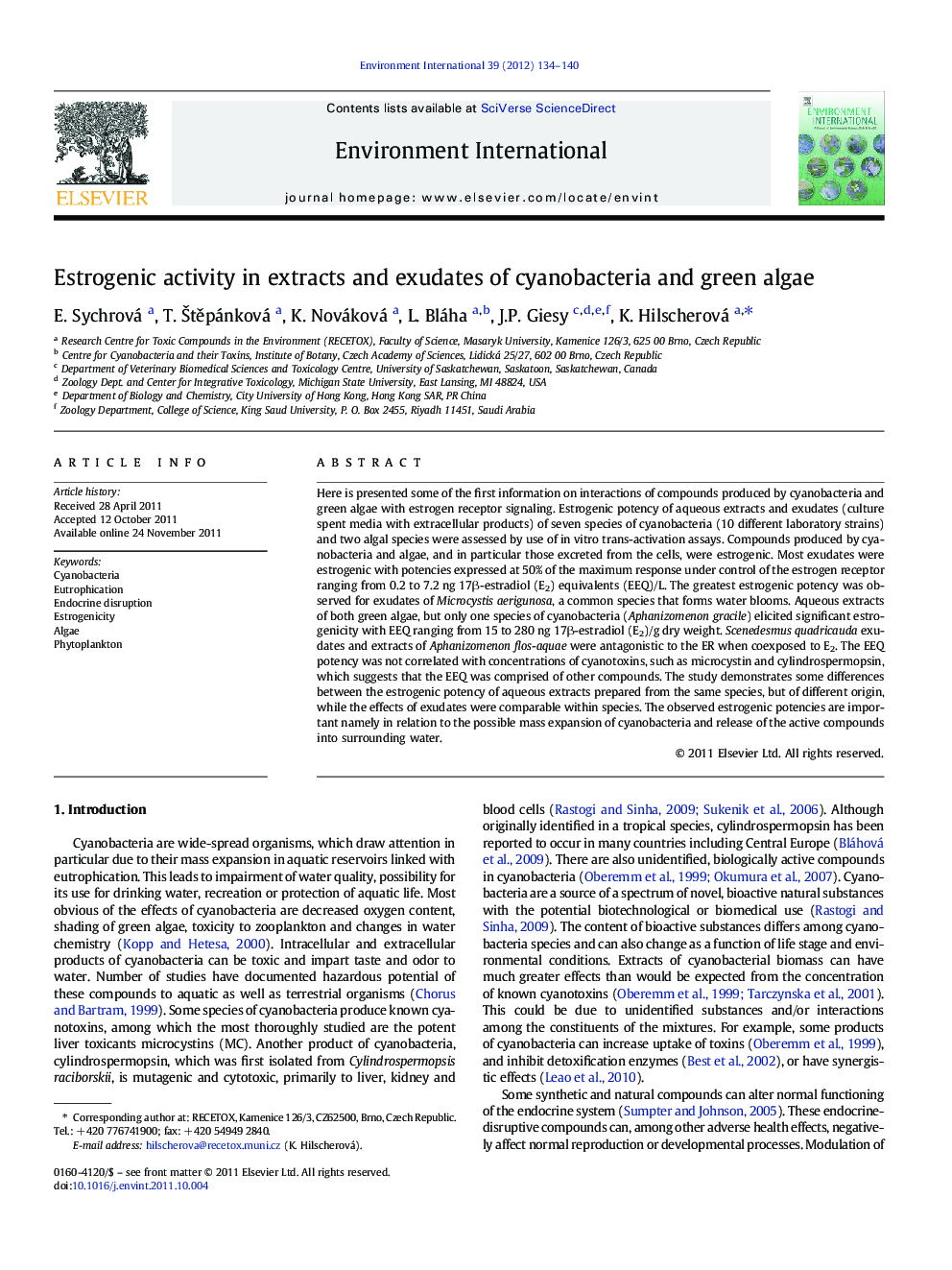| کد مقاله | کد نشریه | سال انتشار | مقاله انگلیسی | نسخه تمام متن |
|---|---|---|---|---|
| 4423144 | 1308811 | 2012 | 7 صفحه PDF | دانلود رایگان |

Here is presented some of the first information on interactions of compounds produced by cyanobacteria and green algae with estrogen receptor signaling. Estrogenic potency of aqueous extracts and exudates (culture spent media with extracellular products) of seven species of cyanobacteria (10 different laboratory strains) and two algal species were assessed by use of in vitro trans-activation assays. Compounds produced by cyanobacteria and algae, and in particular those excreted from the cells, were estrogenic. Most exudates were estrogenic with potencies expressed at 50% of the maximum response under control of the estrogen receptor ranging from 0.2 to 7.2 ng 17β-estradiol (E2) equivalents (EEQ)/L. The greatest estrogenic potency was observed for exudates of Microcystis aerigunosa, a common species that forms water blooms. Aqueous extracts of both green algae, but only one species of cyanobacteria (Aphanizomenon gracile) elicited significant estrogenicity with EEQ ranging from 15 to 280 ng 17β-estradiol (E2)/g dry weight. Scenedesmus quadricauda exudates and extracts of Aphanizomenon flos-aquae were antagonistic to the ER when coexposed to E2. The EEQ potency was not correlated with concentrations of cyanotoxins, such as microcystin and cylindrospermopsin, which suggests that the EEQ was comprised of other compounds. The study demonstrates some differences between the estrogenic potency of aqueous extracts prepared from the same species, but of different origin, while the effects of exudates were comparable within species. The observed estrogenic potencies are important namely in relation to the possible mass expansion of cyanobacteria and release of the active compounds into surrounding water.
► Cyanobacteria and algae can contain estrogenic compounds.
► Estrogenic potential was generally greater for extracellular than intracellular compounds.
► The estrogenic potential of exudates reached ng/L range.
► Equivalent potencies of estrogens known to cause reproductive toxicity to aquatic animals.
► The greatest estrogenic potency showed exudates of Microcystis aerigunosa, common water bloom species.
Journal: Environment International - Volume 39, Issue 1, February 2012, Pages 134–140